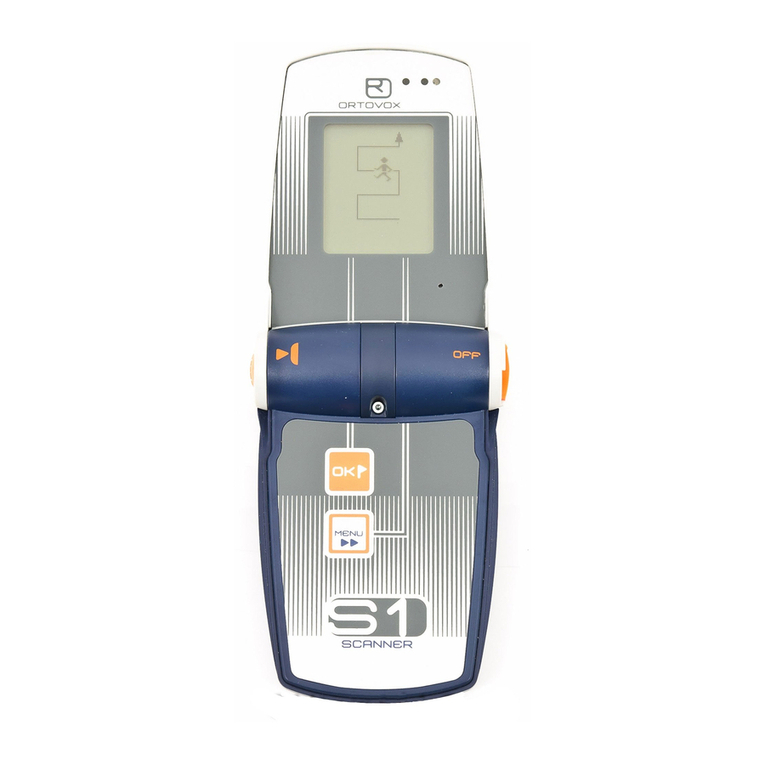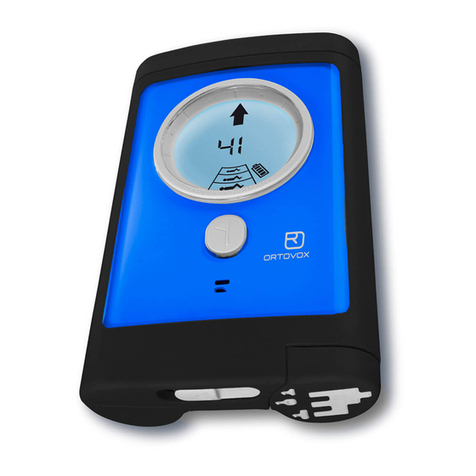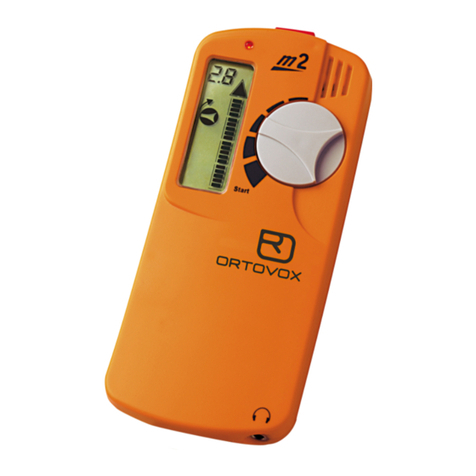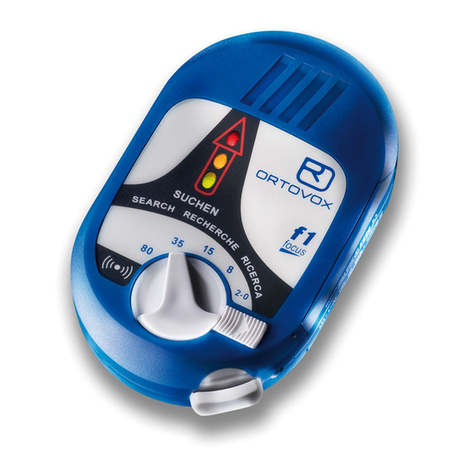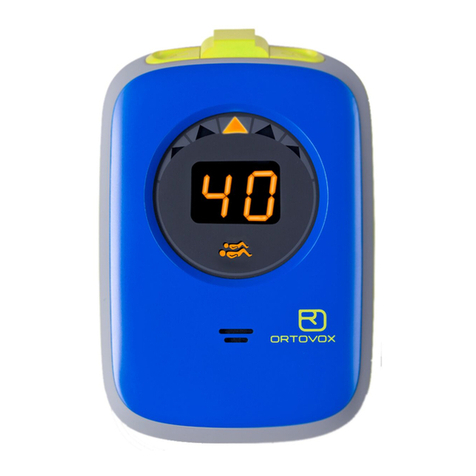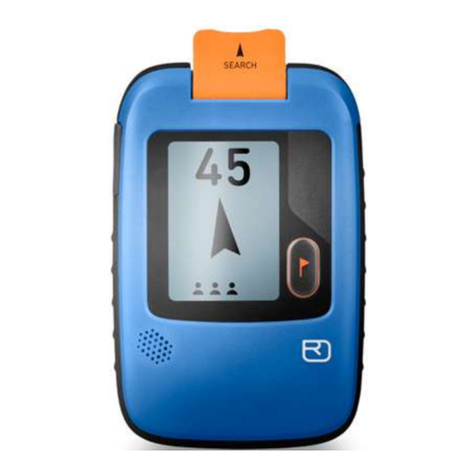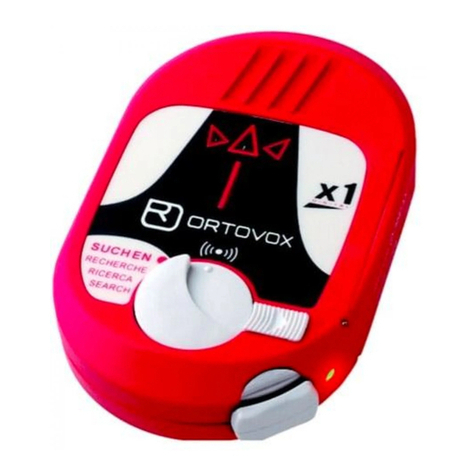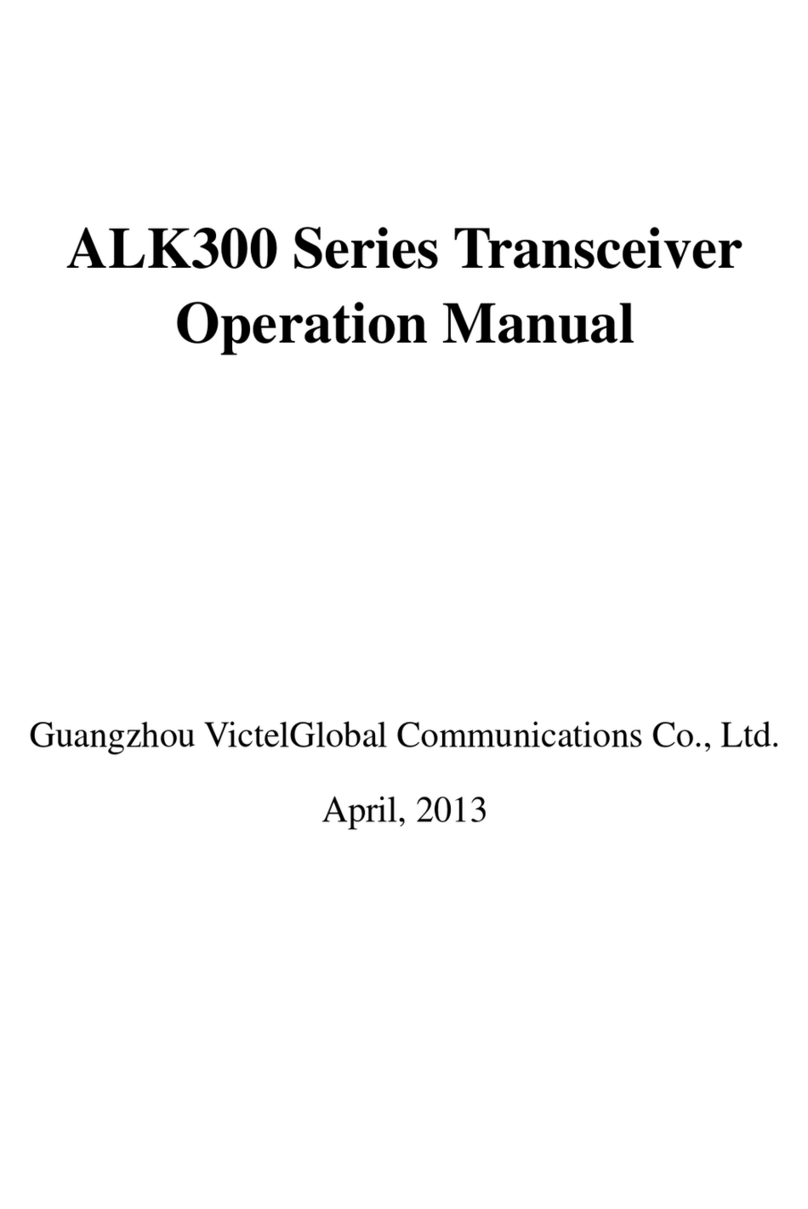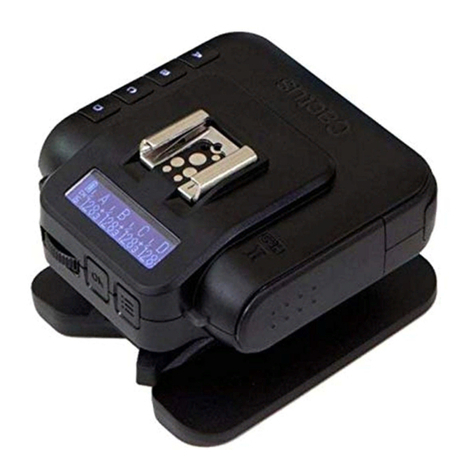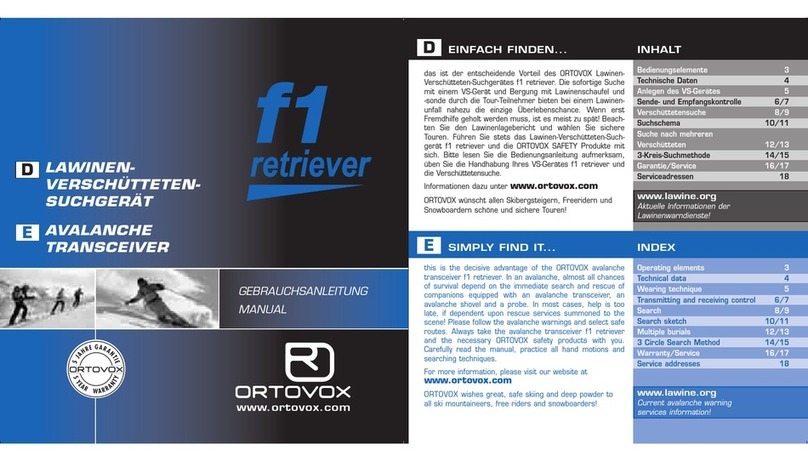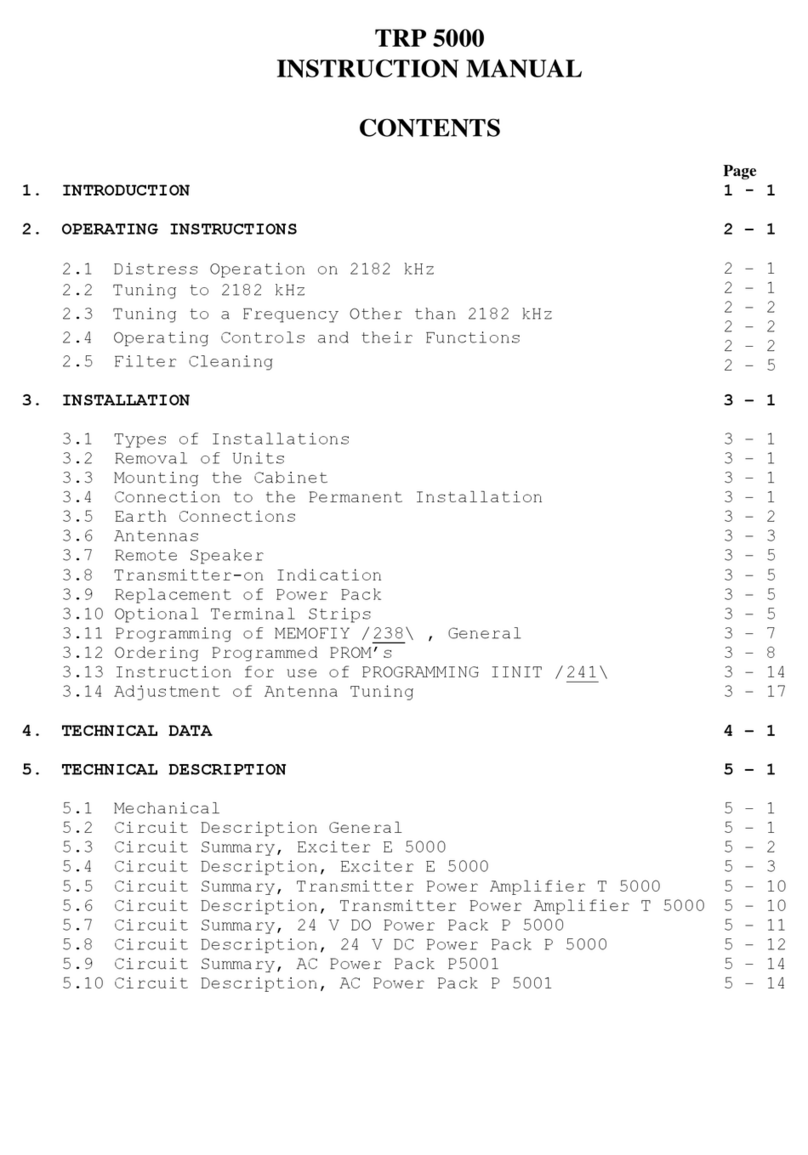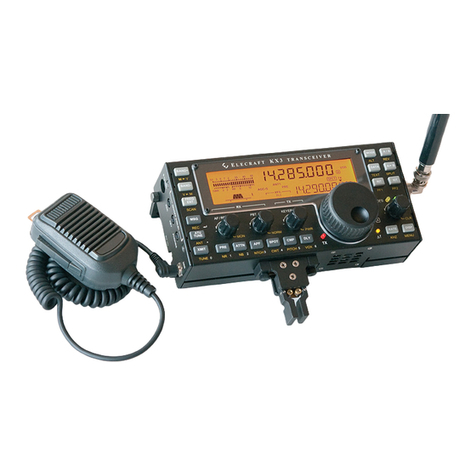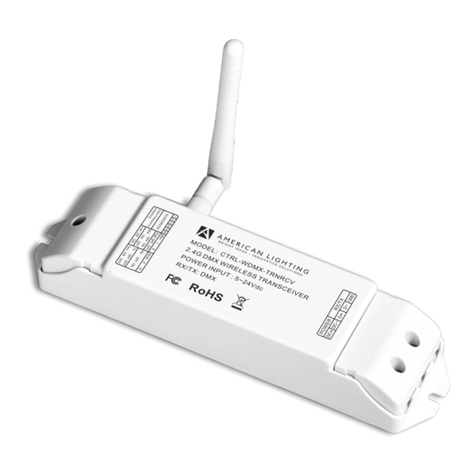TECHNICAL DATA
DEVICE DESIGNATION: ORTOVOX S1
FUNCTION: digital with acoustic emergency operation
CASING: ergonomic, waterproof, impact-resistant
DIMENSIONS: 120 x 80 x 30 mm (closed);
215 x 80 x 30 mm (open)
FREQUENCY
Transmitting: 457 kHz +-80 Hz
The S1 can receive signals from any standard
avalanche transceiver with no limitations
DIGITAL RECEPTION RANGE: up to 60 m
SEARCH STRIP WIDTH: up to 50 m
TEMPERATURE RANGE: -20° C to +45° C
IF THE TRANSCEIVER GETS WET, DO NOT USE DIRECT
HEAT, I.E. SUCH AS A HAIR DRYER; TO DRY IT OUT. HEAT
APPLIED IN SUCH A DIRECT MANNER MAY PERMANENT-
LY DAMAGE THE DEVICE BEYOND REPAIR.
POWER SUPPLY:
3 alkaline AAA Mignon 1.5 V LR 03 batteries
OPERATING TIME
TRANSMITTING: about 250 hours
RECEIVING: about 15 hours
WEIGHT: approximately 245 g incl. batteries,
carrying case approximately 120g
SELECTABLE; ADDITIONAL FUNCTIONS
• Infrared interface
• Compass
• Inclinometer: 0 – 60°
• Thermometer: -20° to +45°C
EU DECLARATION OF CONFORMITY
Manufacturer:
X-log Elektronik GmbH
Responsible person:
Johann Nowotny,
Bahnhofstr. 95,
D-82166 Gräfelfing
declares that the product:
Type: ORTOVOX
Model: S1
Intended Purpose:
Searching for avalanche victims
when used as intended satisfies the
basic requirements in accordance
with Article 3 of the R&TTE guide-
lines, Directive 1999/5/EC, and
that the following standards have
been applied:
1. Health
(Article 3.1.a of the R&TTE guidelines)
ETS 300 718 issue: 05/01
2. Safety
(Article 3.1.a of the R&TTE guidelines)
ETS 300 718 issue: 05/01
3. Electromagnetic compatibility
(Article 3.1.b of the R&TTE guidelines)
ETSI EN 300 718-1
issue: 05/01
4. Efficient use of the radio
frequency spectrum
(Article 3.2 of the R&TTE guidelines)
ETSI EN 300 718-2
issue: 05/01
5. Electromagnetic compatibility
and radio spectrum matters
(Article 3.3.e of the R&TTE
guidelines)
ETSI EN 300 718-3
issue 2004/02
Gräfelfing, 09/07/2008
(City/date of the Declaration of Conformity)
p. p. Andrea Reintges
(name)
INFORMATION FOR THE USER:
Changes or modifications to this device not approved by ORTOVOX can void the users authority to operate the equipment.
FCC ID KF5ORTOVOXS1
This device complies with Part 15 of the FCC Rules. Operation is subject to the following two conditions:
(1) the device may not cause harmful interference and (2) the device must accept any interference received, including
interference that may cause undesired operation. This equipment has been tested and found to comply with the limits for
an intentional radiator pursuant to part 15 of the FCC Rules. These limits are designed to provide reasonable protection
against harmful interference in a residential installation. This equipment generates, uses, and can radiate radio frequen-
cy energy and if not installed and used in accordance with the instructions may cause harmful interference to radio com-
munications. However, there is no guarantee that interference will not occur in a particular installation. If this equipment
does cause harmful interference to radio or television reception, which can be determined by turning the equipment off
and on, the user is encouraged to try to correct the interference by one or more of the following measures:
• Reorient or relocate the receiving antenna.
• Increase the separation between the equipment and receiver.
• Connect the equipment into an outlet on a circuit different from that to which the receiver is connected.
• Consult the dealer or an experienced radio/TV technician for help.
The ORTOVOX S1 surpasses the high requirements of European standard EN 300 718.



